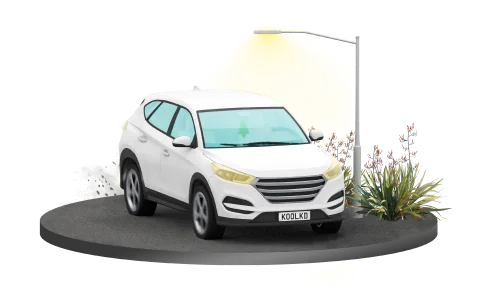How self-driving cars work
Self-driving cars might feel futuristic, but in reality, they’re probably less than 10 years away from hitting our roads. All the major players - from Audi to Volvo - are testing this technology. In fact, trials of self-driving cars are already happening around the world, including here in New Zealand¹.
So how does this technology work? Without getting into too much technical detail, self-driving cars use a combination of image recognition systems, GPS, road mapping, road signs and markings (like the white lines on the side of the road). All of these systems work together to try and avoid collisions and get you to your destination without you having to take the wheel. Pretty cool, right?
How self-driving cars could help
Self-driving cars have the potential to help transform our transportation system. Here’s just a few ways they could make transport safer and easier.
Improve road safety
Today, the main cause of accidents on our roads is human error.1 Things like loss of control or failing to keep left are just some of the things the self-driving cars of tomorrow will be able to help reduce. Then (hopefully) stop altogether, once we’re all using self-driving cars.
Save time with self-parking
Today, we spend a little too much time driving in circles looking for a park. And while there’s already some park assist technology available, you still have to hunt to find the spot. But tomorrow, get dropped off and go – your self-driving car can sort it from there.
More eco-friendly opportunities
Today, a lot of cars still rely on fossil fuels like petrol or diesel to get around. But tomorrow, technology will look after things like speed and acceleration and that could mean cars will operate more efficiently. Phew!
Working out the kinks
There’s still a bit to figure out before self-driving cars become the norm, but Waka Kotahi NZTA already has a plan in place to make sure they’re road ready when the time comes3. So what do we still need to work out?
The intricacies of the technology
For starters, the technology is not quite ready yet for cars to be completely self-driving. For example, the machines need to be able to instantly tell the difference between something small like a stick on the road and something important, like a cat.4
The systems also need to be able to make decisions on the fly, like when to pull over for an emergency vehicle4. Right now, a driver wouldn’t be able to kick back and enjoy the ride. They’d need to be able to jump in and manually take over.
The legal and ethical dilemmas
There are also bigger questions to answer, like who takes the blame for an accident? Right now, there aren’t enough rules and regulations to effectively handle a car accident involving a self-driving car1.
So as we can see, there are still some issues – technical and legal – to be figured out before self-driving cars can really hit the road. But what do you think? Robot takeover or smart transport solution? Are you ready for a world of self-driving cars?

Looking for car insurance?
Save $100 on new, eligible comprehensive car insurance policies with promo code SWEETDEAL.*






